
Background information
Rowing like there’s no tomorrow – part 1
by Patrick Bardelli
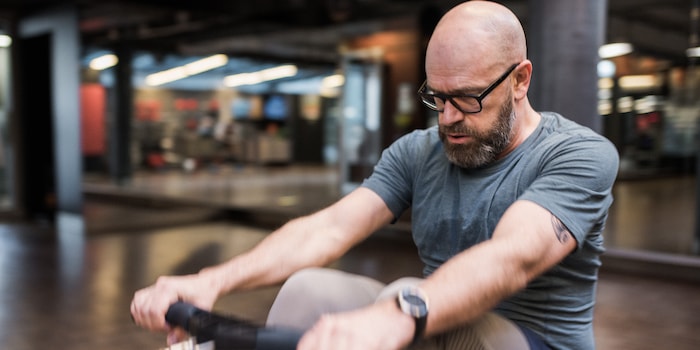
This title is misleading. It should say: Rowing like a lava lamp. Why? I sure am under pressure, but I’m taking it easy today. For a change. And my body’s thanking me for it.
As a reminder: 26 January 2019 is the day when the «Swiss Rowing Indoors», the Swiss Indoor Rowing Championships, take place in Zug. I’m entering the race in the «Over 50» category, the oldies, so to speak. And I really need to step up my game if I want to reach my goal. I want to finish the 2,000-metre race on the rowing ergometer in under eight minutes. I’m currently still over 40 seconds too slow.
I have less than a month time to train for the event. And this is my interval training that I’m planning to get done two or three times a week to work on my speed:
In the meantime, I’ve found out what the «drag factor» refers to. It’s a bit complicated and has to do with the damper level setting and resistance. The drag factor describes the rate at which the flywheel is decelerating. Whenever possible, I use the same Concept2 rowing ergometer in the gym, set the damper level to five and row with a drag factor of about 120.
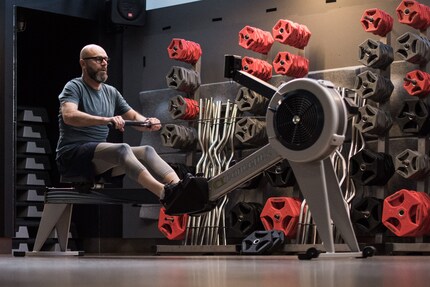
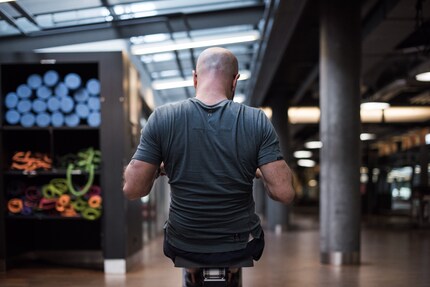
Today, however, I take it easy for once, do five kilometres in about half an hour and get into a pleasant flow. There’s something calming about it and it makes me feel like a lava lamp. No hectic pulling, no crazy sliding back and forth – everything’s flowing. I concentrate on executing every movement as accurately as possible and getting my technique spot on. This is what it shouldn’t look like:
Rowing requires work and coordination from all main muscle groups. The following muscles are trained during each phase of the rowing stroke:
1. The catch
In the catch position, your upper body is leaning forward from the hips and your shins are vertical. Your biceps is holding your arms straight and the flexor muscles of your fingers are holding on to the handle. Your back muscles are relaxed and you’re using your abdominal muscles to hold your upper body up straight.
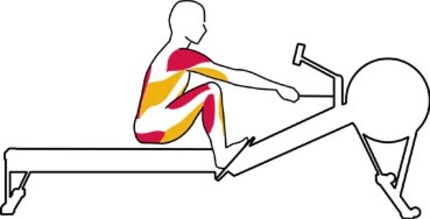
2. The drive
The drive initiates the pressure. Open your knees and hip simultaneously while the arms remain stretched. Your leg and shoulder muscles are doing most of the work at this point, followed by your upper body. Use your biceps to pull the handle towards you. The back muscles work together with the gluteal and rear thigh muscles to support the movement of opening your hip angle. The arm pull is the last movement in the drive and includes almost all muscles of the upper body.
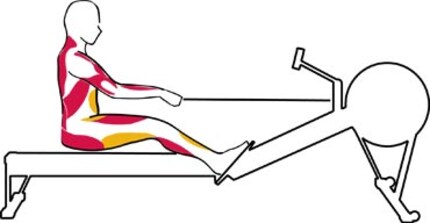
3. The finish
In the finish motion, your core muscles are working and there’s contraction in your gluteal muscles and the quadriceps. The biceps and many back muscles are also working to keep your upper body upright while rotating your shoulders.
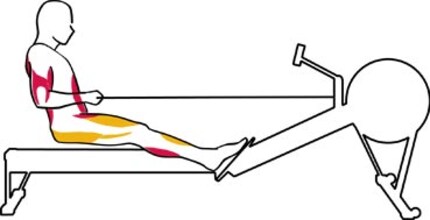
4. The recovery
Use your triceps to extend your arms and add work from your abdominal muscles once your arms are straight to pull your body towards the flywheel. Bend your knees and gradually slide the seat forward on the monorail. It looks as if the handle was pulling your arms first, followed by your upper body and your hips.
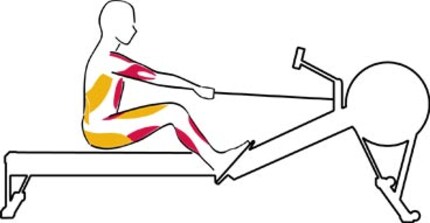
So much for the theory. In practice, while my body starts to tire, I get these four phases all mixed up. And end up in one huge motion mix-up. That’s why my next training session is going to be all about focusing on my technique. My motto is:
Catch, drive, finish, recovery, repeat...
Check out all Concept2 models. Want to know if my hard work pays off and I finish the race on 26 January in under two minutes? Then follow me and stay up-to-date. And if not: Happy 2019!
From radio journalist to product tester and storyteller, jogger to gravel bike novice and fitness enthusiast with barbells and dumbbells. I'm excited to see where the journey'll take me next.
Interesting facts about products, behind-the-scenes looks at manufacturers and deep-dives on interesting people.
Show all